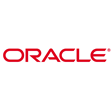Blockchain may currently be one of the biggest talking points in retail, but businesses must take a considered approach to ensure successful implementation.
As with any new technology opportunity area, it makes sense in terms of risk mitigation to take a cautious approach and investigate the potential uses of the technology within the business during an investigation and education phase.
The use cases that are of highest priority to the retailer vary in almost every case.
When the relevant use cases have been identified and understood, this can lead naturally to a proof of concept (POC) phase, where the potential adoption can be trialled in the real world with real data.
“It is important to ensure a thorough debrief and assessment takes place before progressing to a roll-out phase”
It is important post POC to ensure a thorough debrief and assessment takes place before progressing to a roll-out phase.
Given that the technology is relatively new, there are not many live references to refer to, however some of the most powerful opportunities are related to communities of users who are often from different enterprises.
As industry standards continue to evolve it will be important to ensure that whatever solution or platform is selected meets the needs not only of one enterprise but the entire supply chain network that the enterprise interacts with.
Food safety and traceability is a good example of where the value comes from the entire network, not just within the confines of one enterprise.
Choosing a platform
Originally there were many open-source blockchain technology approaches, such as software application Ethereum, and over the past few years there has also been a growing interest from businesses in Hyperledger-based approaches.
Launched in 2015 by the Linux Foundation, Hyperledger is an umbrella project consisting of open-source blockchain frameworks and related tools.
There are now more than 230 organisations that have joined Hyperledger (as of March 2018), including IBM, Accenture, Cisco, Intel and Oracle.
It is important to select the right platform to meet an enterprise’s broad needs in the area of blockchain. There are application solutions based on blockchain that can be acquired to address particular business needs.
However, experience has shown that most enterprises require capabilities across a wide range of potential uses, not just one fixed solution. A platform approach that can be configured to enable a portfolio of requirements would therefore be more flexible.
Scalability challenge
Some of the early blockchain pioneers have found the challenge of scalability and performance difficult to address. It is also important that any blockchain platform is fully scalable and performant, to be able to take a POC to roll-out without requiring redevelopment.
Many blockchain applications require careful handling of identity management to ensure robust secure access control across complex communities of internal and external users.
“Many blockchain applications require careful handling of identity management to ensure robust secure access control across complex communities of internal and external users”
When you combine these crucial capabilities of scalability, identity management and ease of configuration, the platform options are significantly reduced.
Oracle has combined all of these capabilities with extensive integration opportunities to a broad suite of SaaS (software as a service) applications, analytics capabilities and a comprehensive control console to ensure easy and effective management, development, maintenance and deployment.
For enterprises with a broad variety of business needs, this sort of platform approach has clear advantages.

Peter Bambridge is director of retail and consumer goods at Oracle

































No comments yet